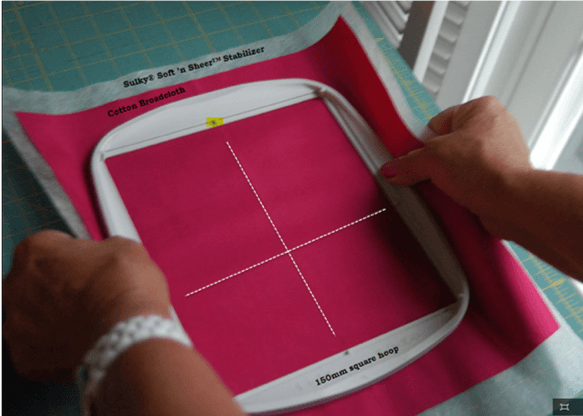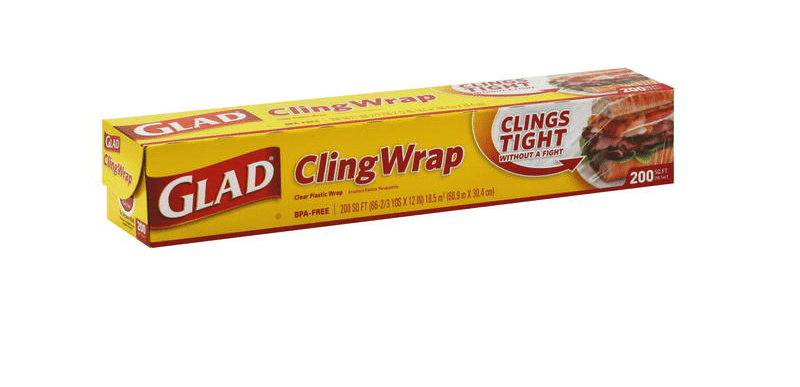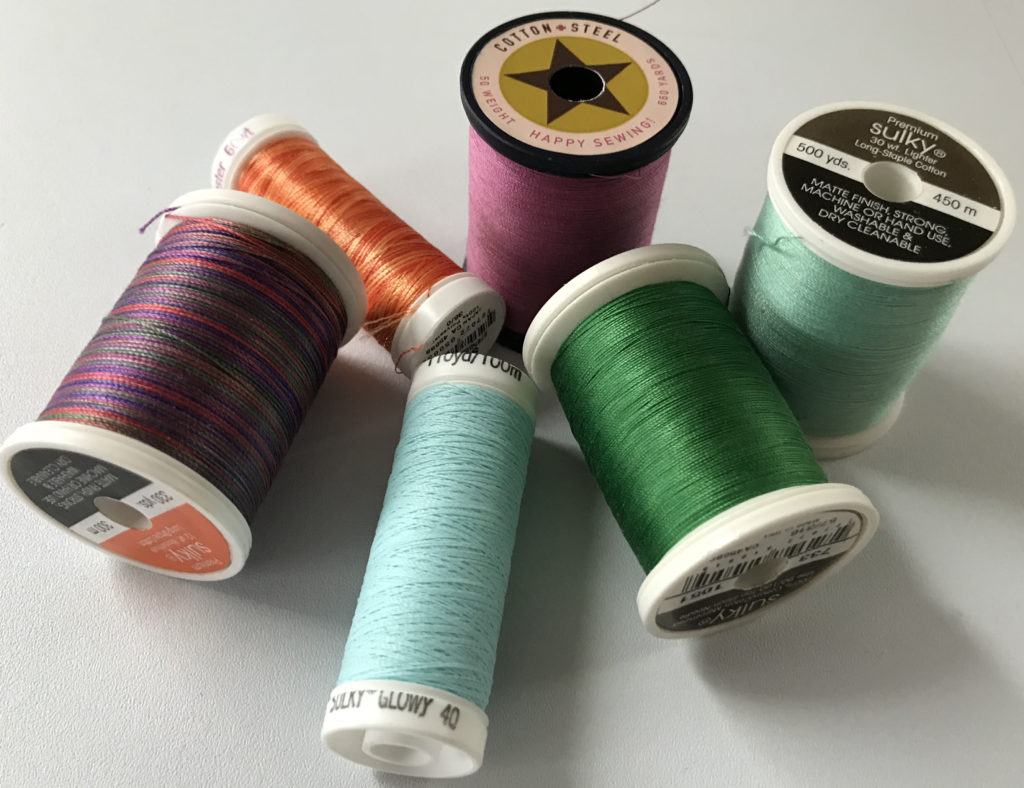10 Machine Embroidery Myths
To kick off National Embroidery Month, we’re diving into 10 machine embroidery myths. Are these myths true or false…or both? Join us all month long as we learn all about hand embroidery, machine embroidery, free-motion embroidery and more. Fun projects, freebies and product reviews abound!
1. Machine Embroidery Is Too Complicated
FALSE. Most people believe that machine embroidery is a very technical skill to master. It’s assumed that because a larger, typically more expensive, machine is required, the skill level must be off the charts. While machine embroidery does require some basic knowledge, practice and “recipes” for success, the actual process is as simple as pressing “start.”
2. Machine Embroidery Takes Too Long
FALSE. Once the fabric is hooped with the appropriate stabilizer, embroidering a design by machine is one of the fastest embellishments you can do (that doesn’t involve the dreaded glue!). What would take loads of hours to accomplish by hand is completed in a mere fraction of the time by machine. That being said, some designs still can take hours to embroider, depending on the number of thread colors and stitches. But in general, machine embroidery is a quick embellishment that allows you to put an artistic stamp on your creations.
3. Machine Embroidery Is Expensive
Maybe. Expensive is a relative term. Knowing that all crafts demand a certain level of investment, comparatively machine embroidery truly is more expensive than, say, hand embroidery. However, many machine companies have low-price models and your sewing machine dealer might have a trade-in policy if you want to upgrade your current sewing machine to a model with an embroidery module. Grab a starter pack of supplies, such as stabilizer bundles and thread assortments, rather than purchasing things a la carte, to save money in the long run.
4. I Don’t Sew, So I Can’t Embroider
FALSE. Even if you’ve never sewn a straight line, you can still master the skills needed to hoop fabric and prepare it for machine embroidery. In fact, there are machines that do ONLY machine embroidery, meaning the module is permanent and cannot be removed for standard sewing applications. These machines are great for people who want to personalize readymade creations or who already have a sewing machine they love and don’t want to switch from one mode to the other.
5. I Can Use Household Items Instead of Stabilizers to Save Money
{face palm} FALSE. I have heard people use plastic film from the grocery store as toppers for machine embroidery, among other wacky substitutions. This may make you feel more frugal, but in the long run will end up costing you the project, the needle, and your MACHINE. Companies, like Sulky, have developed specialty products to ensure your stitchouts are flawless and your machine investment isn’t harmed. Swapping a different type of product altogether, especially if it’s unrelated to sewing, could irrecoverably damage your equipment.
6. When The Thread Breaks, It’s the Thread’s Fault
NOPE. This is only true if the thread is old, brittle or low-quality. Before threading the machine, cut off a 10″ piece of thread. Try to stretch it, twist it, see how it reacts. If the thread breaks easily, it may be old or not thick enough for machine embroidery. If it frays at the cut end after handling, it is likely not going to withstand the friction from a high-speed design. Thread breakage occurs for a variety of reasons. If you’re using a high-quality, tried-and-true thread brand (ahem…Sulky), and the thread is breaking during the stitchout, it may be the needle choice, fabric choice or design density when compared to thread weight.
7. My Fabric Puckers Because The Hoop Isn’t Tight Enough
Actually, the hoop might just be TOO tight. A common myth is that fabric must be taut as a drum in the hoop. I find if it’s truly that tight, the fabric fibers (no matter the fabric content) get pushed apart ever so slightly. After the embroidery is complete and the hoop is released, those fibers want to go back home. This causes puckering that is permanent. To avoid this, hoop the fabric so it’s wrinkle free but still has a bit of give in the hoop (but not so much that it can move). Don’t tighten the screw any further after hooping, and don’t pull on the fabric or stabilizer edges. Fabric can also pucker if it’s not stabilized properly. Adding a second layer of stabilizer to lightweight fabrics, even floating it under fabric that’s already hooped, can do wonders to perfect a stitchout.
8. Only Use Rayon Thread for Machine Embroidery
FALSE. You haven’t lived if you’ve only used rayon for machine embroidery designs. Yes, rayon has a great sheen and comes in a beautiful array of colors for all of your design needs. But there are times when Polyester is a better choice, and times when cotton will give a nice matte effect to a garment or bag. Make sure the design you’ve chosen will support the weight of a different thread (if applicable) and always do a test stitch to ensure you love the end result. Conversely, rayon thread also looks great when used for quilting and for topstitching! Don’t limit your creativity by thinking one thread has one use and one use only.
9. I Can Sell Items I Made With Purchased Embroidery Designs
Maybe. The designs you purchase will have a copyright and/or usage guide, usually in fine print. Some of this is legally binding, and some is not. Make sure you understand what your purchase of the design entails and do some research before selling anything you’ve made with someone’s else’s property. I found this article helpful in regards to using sewing patterns. Embroidery designs may or may not be considered patterns, which blurs the “machine embroidery myths” line even more.
10. Machine Embroidery Isn’t Fashionable
FALSE. Machine embroidery is more mainstream than ever before, showing up on fashion runways, high-end home goods, designer shoes and more. A recent trend showcased tattoo art that looked like embroideries. Though the art of embroidery dates back to 3500BC, it continues to evolve with the times, with new techniques, new designs, new applications that arise from experimentation and just plain fun. Even traditional embroideries, vintage embroideries and original works made for machines can have new life with a modern approach and flair.
If you’ve bought into some of these machine embroidery myths, I hope you’ll see past them and give machine embroidery a try. Throughout the month (and beyond) Sulky is committed to bring you the very best machine embroidery education, whether you’re starting from scratch or a seasoned pro looking to expand your skills. Join our email list to always be in the know when we post something new, release a new product or share more great tips and tutorials.













patriciawalters048@gmail.com